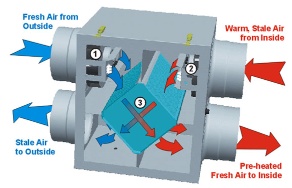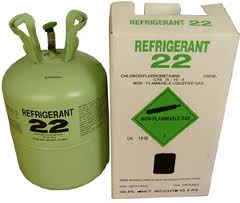

Air quality in school classrooms
Schools represent much higher occupation levels than a typical commercial office building, hence the bioburden becomes even greater. What is bioburden?….It is the number of non-sterilised living bacteria in a space.
The bacteria particulates can be brought in on people’s clothing, through open doors and windows. The activity level of most young people increases the shedding of skin cells and other particulates which makes school air some of the dirtiest air in any environment. This makes air quality in schools even more important than most other types of buildings.
For any parent who has taken their child to school first thing in the morning and collect them in the afternoon, the difference in the smell of the school at the end of the day is astonishing. For those in the school, they have become accustomed to the odour and do not realise their air is full of particulates and odours. In addition, cold, dry air is a common asthma trigger and can cause children to have flare-ups. Hot, humid air also can be a problem.
STEP 1: Air Conditioning
Air conditioning in schools is the first major step in improving air quality. These systems can both heat and cool the air, most importantly they contain filters that remove bacteria and other particulates. Typical wall mounted air conditioning units in a classroom can filter the air 20 times every hour (this is cleaning the air in the entire classroom, every 3 minutes) , which prevents particulates from being transmitted around the classroom from one person to another.
Not only does Air Conditioning mean students and teachers can work more efficiently in a classroom with a comfortable temperature, it shall reduce transmission of ailments and ultimately absenteeism.
STEP 2: Ventilation
As we have discussed, installing Air Conditioning in a classroom is the first major step to improve air quality. The second step to further improve air quality is the introduction of new fresh air into the classroom. 
In 2018, the government’s Education & Skills Funding Agency released Building Bulletin 101 (Guidelines on ventilation thermal comfort and indoor air quality in schools). This comprehensive document shows Regulations and Guidance on ventilation, thermal comfort and indoor air quality to the internal environment in schools. Although this document is a benchmark for schools, the reality is the limited school budgets often results in this rarely being achieved other than in new or refurbishment projects.
Just because it may prove difficult for schools to meet this benchmark, it does not mean they are unable to realise many of the benefits of improved ventilation. At Air Intelligence, we are experienced at delivering low cost fresh air ventilation solutions into classroom environments. Typically these are ‘heat recovery’ ventilation systems that both supply fresh air (1) and extract stale air (2) at the same time. To be energy efficient, they use a heat exchanger (3) to absorb the heat from the extracted air and apply this to the new fresh air.







